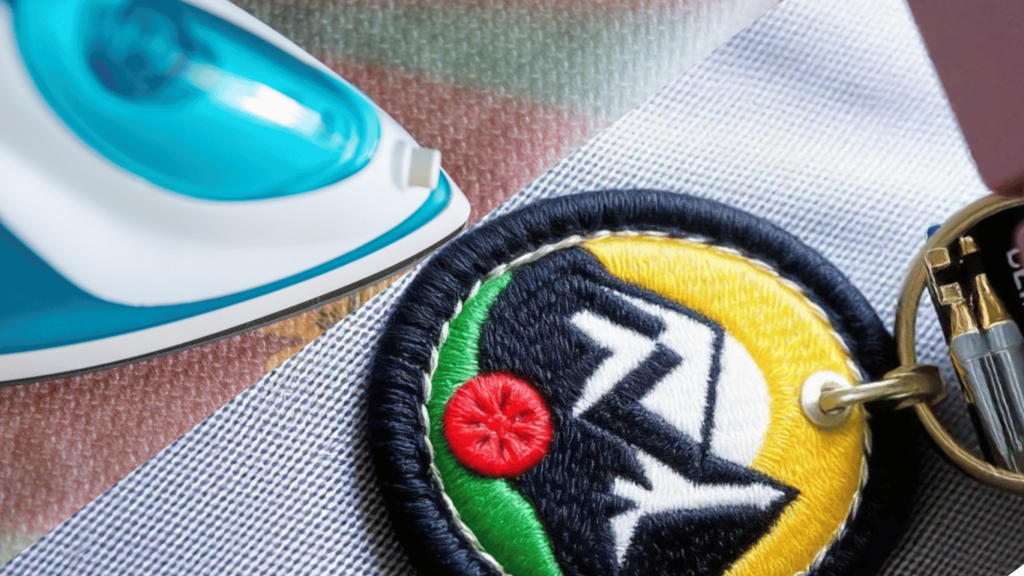
Custom patches are a popular way to add personal flair to clothing, bags, and accessories. Whether you’re customizing a jacket or promoting your brand, patches offer endless possibilities. However, one question often arises: Should I choose iron-on patches or sew-on patches? To help you make an informed decision, we’ll break down the differences between these two types of patches and highlight their advantages.
What Are Iron-On Patches?
Iron-on patches are designed with a special adhesive backing that allows them to be applied to fabric using heat. All you need is an iron (or a heat press), and you can easily attach the patch to your desired garment. One of the main appeals of these patches is their simplicity. They’re perfect for people who want a quick, hassle-free application process.
Pros of Iron-On Patches
- Easy Application: No sewing skills are required. Just place the patch on your garment, apply heat, and it’s done.
- Time-Saving: Attaching an iron-on patch takes just a few minutes, making it a convenient choice for those short on time.
- Strong Adhesion: High-quality iron-on patches, like the ones available at The Supreme Digitizing, are designed to last through multiple washes and wear.
- Versatility: These patches can be used on a variety of fabrics like cotton, denim, and polyester. However, they work best on thicker, heat-resistant materials.
Cons of Iron-On Patches
- Limited Fabric Compatibility: These patches may not adhere well to materials like nylon or leather, which can be damaged by heat.
- Durability Concerns: Although durable, iron-on patches may start to peel over time, especially if not applied or maintained properly.
- Requires Careful Washing: To ensure longevity, garments with these patches should be washed on gentle cycles and air-dried.
What Are Sew-On Patches?
Sew-on patches, as the name suggests, require sewing to attach them to the fabric. Unlike iron-on patches, these patches don’t rely on adhesive, making them a more traditional option. You can sew these patches by hand or use a sewing machine for a more secure and long-lasting application.
Pros of Sew-On Patches
- Maximum Durability: these patches are known for their longevity. Once sewn onto a fabric, they stay put for years, making them ideal for items that undergo frequent use.
- Works on All Fabrics: Since sew-on patches don’t require heat, they can be applied to delicate fabrics like silk, leather, or nylon, which may not work well with iron-on options.
- Customizable Attachment: You can sew patches on more loosely for a decorative effect or more tightly for a permanent fixture.
- Professional Finish: these patches often look more polished and professional, especially on work uniforms or high-end apparel.
Cons of Sew-On Patches
- Requires Sewing Skills: If you don’t know how to sew, attaching these patches can be challenging. While not difficult, it does require some practice and tools.
- Time-Consuming: Compared to iron-on patches, sewing on a patch takes more time and effort.
- Permanent: While the permanent attachment is a pro for some, it can be a con for others who prefer temporary or easily removable customization.
Which One to Choose?
Now that we’ve explored the benefits and drawbacks of both iron-on and sew-on patches, how do you decide which option is best for you? The decision comes down to your specific needs:
For Temporary or DIY Projects: If you’re looking for a quick and easy solution to add a custom touch to an outfit, iron-on patches are ideal. They’re beginner-friendly and can be applied in minutes.
For Long-Term Use: If durability and fabric versatility are top priorities, sew-on patches are the way to go. They’re perfect for items that will be washed frequently or for materials like leather and nylon.
For Uniforms and High-End Apparel: If you’re customizing professional uniforms or high-quality garments, sew-on patches tend to give a more refined finish and offer greater longevity.
Can You Combine Iron-On and Sew-On Techniques?
Absolutely! For those who want the ease of application with added durability, combining both methods is a great option. Start by applying an iron-on patch, then reinforce it by sewing around the edges. This combination ensures that the patch stays securely attached, even after multiple washes.
Care Tips for Both Iron-On and Sew-On Patches
Regardless of whether you choose iron-on or sew-on patches, proper care is crucial to maintaining their appearance and longevity. Here are some tips for each type:
Iron-On Patches:
- Wash the garment inside out.
- Avoid high heat from dryers or direct ironing on the patch.
- Reapply heat if you notice any lifting at the edges.
Sew-On Patches:
- Use durable thread and make sure to tie off your stitches securely.
- If you’re applying patches to delicate fabrics, use a fine needle and lightweight thread to avoid damage.
- Consider using a fabric stabilizer to keep the patch in place during the sewing process.
Conclusion: Making the Right Choice
In conclusion, both patches offer distinct advantages, and your choice will depend on your personal needs and the specific project. If you need a quick and convenient solution, iron-on patches are the way to go. If you prioritize durability and fabric flexibility, sew-on patches will serve you well. Whichever you choose, The Supreme Digitizing offers a wide range of high-quality patches to meet your needs.